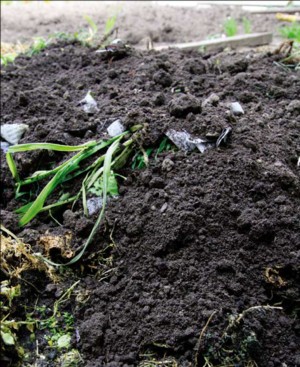Composting is a lot easier than most people think. Put simply, it’s about bringing together organic matter (animal or vegetable) that then breaks down into what is called humus, which is dark in colour and full of nutrients, which you then add back into the garden. Here’s a handy guide for making your own.
The main ingredients
There are four main elements required for making good compost. These include:
Nitrogen: This is obtained from green organics such as kitchen scraps, fresh lawn clippings, weeds and leaves. These help to reproduce organisms and create the heat required for making compost. Remember that too much green in your compost will cause it to overheat and become smelly, so rather than composting it will rot and you don’t want that to happen.
Carbon: These are your brown organics, generally a drier version of your greens, such as straw, dry leaves, paper and dry clippings that provide the fuel to make energy (heat) in the compost. Be careful not to add too much of this or your compost will not be activated and instead will just sit there waiting for the next generation to come along and work it out.
Oxygen: We need this to breathe and so does you compost to help oxidise the carbon. This is done by regularly turning over the compost heap. Remember that if you don’t turn it over often enough, greenhouse gases build up, which is not good for the environment or your compost. Weekly turning of the compost is required.
Water: If the compost is too dry the micro-organism can’t do their job. However, compost should be moist but not wet. Wet compost becomes anaerobic, giving off a bad smell. If this happens, add more carbon or soil to the compost to help dry it out.
What to use as a compost bin
You can use a traditional compost bin with a lid or a tumbler version that sits on a stand. Then there’s the amazing Aerobin that requires minimal effort. If recycling is your preference, you may choose to build a wooden structure in the corner of the garden where excess moisture can drain into the soil. But if room is a problem, digging a hole in the garden is just as good.
What to add to compost
• Vacuum cleaner dust
• Eggshells
• Old newspapers
• Weeds
• Wood ash
• Fruit and vegetable peelings and leaves
• Fallen leaves (in layers)
• Tea leaves and teabags
• Coffee grounds
• Old potting mix
• Grass cuttings
• Sawdust (not from treated timber!)
What not to add to compost
• Meat and dairy products
• Diseased plants
• Metals, plastic, glass
• Dog and cat poo
• Magazines (especially not Good Gardening)
• Large branches
• Bones
• Sawdust from treated timber
• Fruit fly-infested fruit
How do you compost?
• Balance is the key, so a good mix of the above-mentioned materials is required. Never use too much of one item.
• The smaller the pieces, the faster they break down. Chop up larger and tougher items before they go in the bin.
• Occasionally add a layer of soil to help break up the layers.
• Add cow or other manure to help activate the compost.
• Turn over the heap to help aeration, which will also help the compost break down faster.
Layering
• Always use the layering system, starting with a coarse layer of straw and twigs at the bottom, then add:
a. kitchen scraps and garden clippings
b. dry leaves and shredded paper
c. a sprinkle of water then a light covering of soil
• Repeat abc until you reach the top. As mentioned, keep your compost moist but never wet. If it seems too wet, turn it over using a garden fork to aerate it, which will help dry it out. You can also add some soil to absorb the moisture. Depending on the size, location and items you add, compost can take from six weeks to three months to make.







